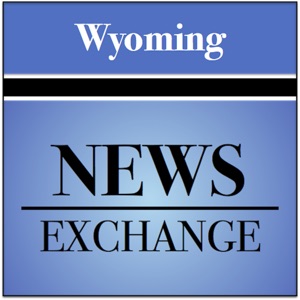BLM presents potential plans to support greater sage-grouse

CHEYENNE — The greater sage-grouse population is spread across 11 Western states, but that population is declining. Between 1965 and 2021, that number has plummeted 80%, and half of that decline happened just since 2002, according to a report from the U.S. Geological Survey.
Estimates predict as many as 16 million sage-grouse lived across the plains and high deserts in Canada and 13 states, according to the National Audubon Society. Current estimates put that number somewhere between 200,000 and 500,000.
Efforts to register the species as endangered have failed nine times.
Recently, the Bureau of Land Management announced its draft environmental impact statement (EIS) and plan amendments for sage-grouse conservation. The goals of these amendments are to support the sage-grouse population and make collaboration between state, federal and private agencies more efficient.
Thursday evening, BLM held a meeting in Cheyenne to share these potential plan amendments with the public as its public comment period continues. These comments are meant to suggest changes or identify issues with the draft EIS before it is officially implemented.
The public comment period opened March 15 and will remain open until June 13. As of Thursday morning, BLM had received 219 comments.
This plan hasn’t been updated since 2015. Pat Deibert, national sage-grouse conservation coordinator for BLM, said it is due for a change. She said that well over 350 studies concerning sage-grouse have been published since then, and they are still observing long-term population declines.
There are also considerations around how climate change impacts sage-grouse and their environment that have developed since 2015.
An attempt to update the plan in 2019 wasn’t upheld by a judge due to inconsistencies across domains. Deibert hopes to build on the work from 2015 and 2019 to have an amended plan in place by the end of this year.
“We’re trying to make sure we’re conserving that healthy sagebrush ecosystem for sage-grouse. That’s what this is about. But the benefits are so much more,” Deibert said. “It’s conserving that rural way of life, it’s conserving other species, it’s conserving economies.”
BLM has presented six alternatives for potential adoption. Each one amends the plan in different ways to address certain concerns through various strategies.
One of the considerations in amending the land management plan concerns habitat management area alignments and non-habitat criteria. This means addressing portions of management areas that may not be a habitat for sage-grouse. This happens when large areas are drawn as management areas, which is common in Wyoming, rather than designating finer, more specific management areas.
There is also a focus on the mitigation process and integrating that with existing mitigation policies on the state level. BLM hopes to put an increased emphasis on mitigation hierarchy, which prioritizes avoidance. If they can’t do that, then they have minimization measures, followed by compensatory mitigation.
Other factors to consider include habitat objectives; disturbance caps; fluid mineral development and leasing objective; oil and gas waivers; renewable energy development and transmission; livestock grazing; wild horse and burro management; threats from predation and adaptive management process.
Of the six proposed alternatives, BLM recommends alternative five. Here is how alternative five addresses the considerations:
- Habitat management areas — Updates habitat prioritization using current science; Priority Habitat Management Areas are most restrictively managed.
- Habitat objectives — Multi-scale qualitative objectives informed by site-specific science.
- Disturbance cap — Adjusts evaluation unit to a biologically-defined area; allows for exceptions to consider local conditions.
- Adaptive management — Consistent thresholds across political boundaries with flexibility to consider state or local data, targeting our responses to the identified cause.
- Wind, Solar and Associated Transmission — Avoidance (instead of closed), for more flexibility while providing for protection.
- Oil and Gas Leasing and Development — Does not close new areas to leasing, and clarifies how to apply waivers, exceptions, and modifications as requested by the states.
Deibert said that alternative three would likely put in the most restrictions to support the sage-grouse ecosystem, but it is not the most practical.
“BLM is not an ‘or’ agency, we’re an ‘and’ agency,” said Brad Purdy, deputy state director of communications for the BLM’s Wyoming State Office. “We can have working landscapes. It’s not working landscapes or sagebrush conservation; we can have working landscapes and sagebrush conservation, right? We can do it together. ... That’s what we’re charged to do as BLM. A lot of local economies depend on the economic benefits of public lands. It’s very, very important.”
Along the Interstate 80 corridor, BLM land alternates with private land every 640 acres, creating a sort of checkerboard of land ownership. Deibert said this alternating ownership is what makes collaboration so important.
“The bird, it does not care if it’s flying over BLM land or lekking on private land or crossing the border between Colorado and Wyoming,” Purdy said. “So, we need to work across those boundaries, in partnership.”
This story was published on April 21, 2024.








